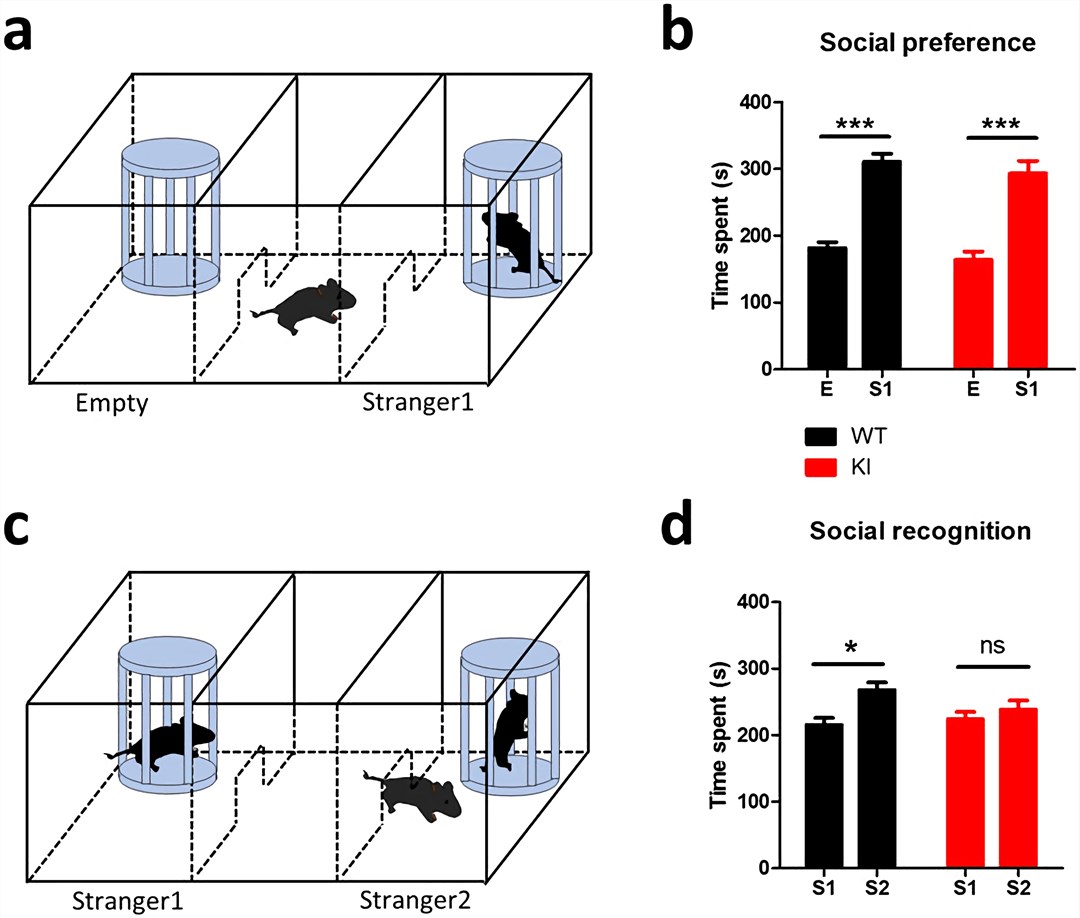Three Chamber Social Test
Creative Biolabs conducts the three-chamber social test to assess the effect of novel drugs on social behavior and the deficits in social interactions in transgenic mice. This test measures the "sociability", the propensity to spend time with another mouse, as compared to time spent alone in an identical but empty chamber, and "social novelty", the propensity to spend time with a previously never-before-met mouse rather than with a familiar mouse.
Introduction of Three Chamber Social Test
The main principle of this test is based on the free choice by a subject mouse to spend time in any of three box's compartments during two experimental sessions: the sociability session and the social novelty session.
Sociability Session - After adaption to the three chamber arena, the subject mouse is placed into the middle chamber. In the left chamber of the test apparatus, a stimulus mouse is placed under a wire cage. In the right chamber, a similar wire cage is located without the stimulus mouse. To quantify the sociability of the experimental mouse, the time it spends in each chamber and the time spent sniffing at each wire cage are measured. Normal mice will spend more time with the conspecific while mice with disruptions in social interactions will spend more time with the empty chamber rather than the conspecific.
Social Novelty - In this session, a novel mouse is placed under the wire cage in the empty right chamber, while the already known mouse stays in the left chamber. This time, normal mice will spend more time with the new conspecific due to a preference for novelty, but mice with social disruptions might not recognize the familiar conspecific and thus will spend similar time in each chamber or the middle chamber.
 Fig.1 Lsd1 KI mice show impaired social recognition memory. a, b, sociability test; c, d, social recognition and novelty. (Lim et al. 2017)1, 2
Fig.1 Lsd1 KI mice show impaired social recognition memory. a, b, sociability test; c, d, social recognition and novelty. (Lim et al. 2017)1, 2
Features of Three Chamber Social Test
- It has proven to provide a standard, simple design with a high-throughput approach to compare strains and genotypes, investigate the development of social deficits and to test effects of treatments and other manipulations on proximity and olfactory investigation of stimulus animals.
- The main specificity of this test is the design in which the stranger mouse is placed under a wire cage and unable to move freely, which prevents direct physical contact but allows sensory interactions.
- In this test, multiple repertoires of specific parameters (e.g., freezing, self-grooming behaviors, biting of the wire cage of the stranger mouse) can be monitored and recorded, permitting robust analysis.
Creative Biolabs provides a comprehensive list of rodent behavioral tests (e.g., motor function, cognition, and social behavior) to assess potential effects of pharmacological compounds on different aspects of animal behavior in models of neurological disorders as well as to characterize the phenotypes of transgenic mice. Moreover, to respond to the specific needs of our clients, we provide customized behavioral tests.
Additionally, we provide a wide range of neurological disorder models for drug efficacy studies and drug screening:
If you are interested in our services, please contact us to discuss your research needs.
References
- Lim, C. S.; et al. PKCα-mediated phosphorylation of LSD1 is required for presynaptic plasticity and hippocampal learning and memory[J]. Scientific Reports. 2017, 7(1):4912.
- under Open Access license CC BY 4.0, without modification.
For Research Use Only.
